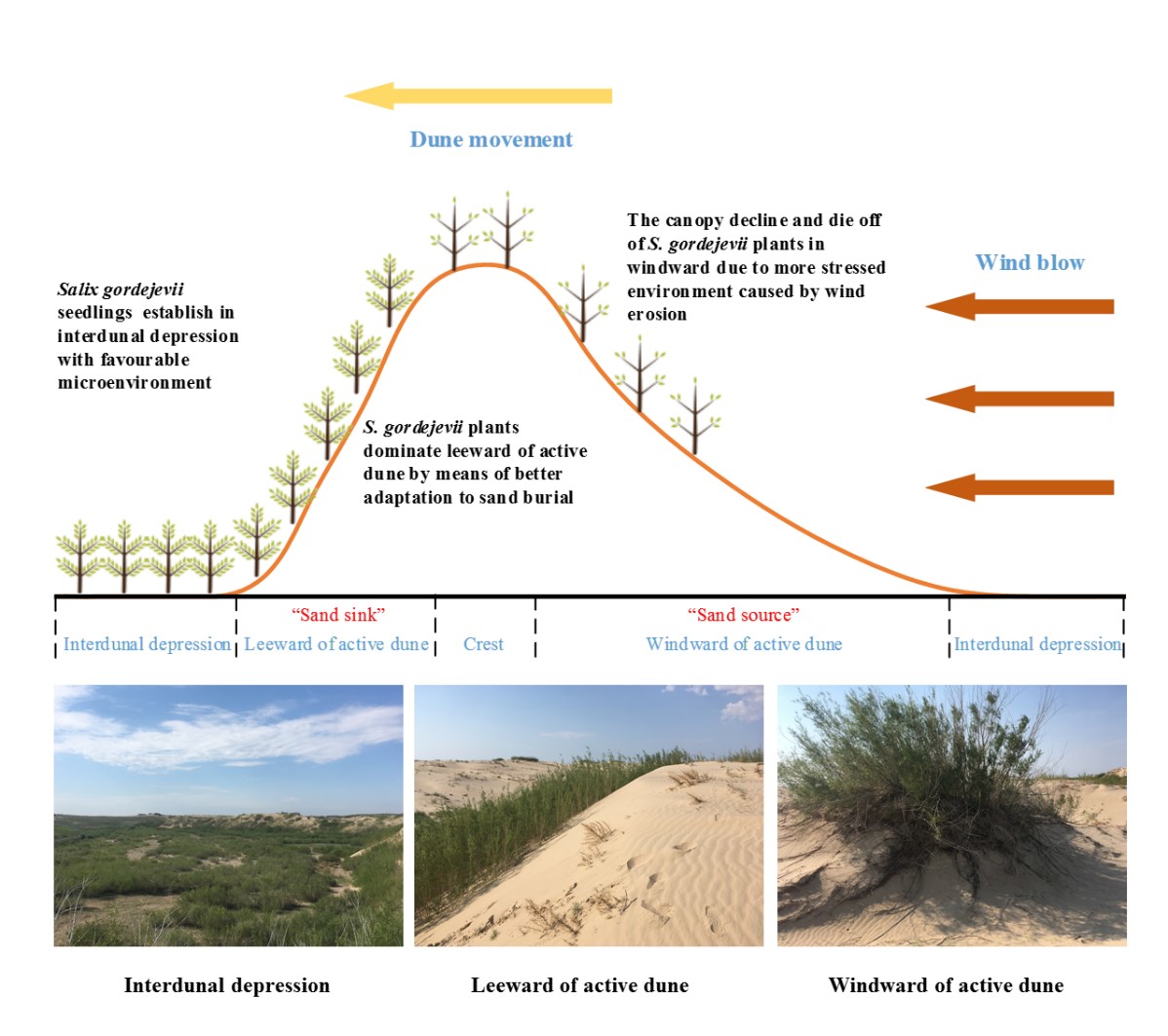
Salix gordejevii Y.L. Chang et Skv., a representative endemic shrub species in Horqin Sandy Land of Northeast China, is extensively used in the sand dune revegetation projects of this region. It commonly exhibits conspicuous decline and mortality on the windward slopes of active dunes but thrives on the leeward slopes, whereas the exogenous environmental drivers and endogenous physiological mechanisms behind this pattern of shrub decline and mortality in the sand dune habitats remain poorly understood.
A research team led by Prof. Dr. HAO Guangyou from the Institute of Applied Ecology of the Chinese Academy of Sciences measured the xylem hydraulics, sap flow, water relations and non-structural carbohydrate reserves for S. gordejevii plants that respectively inhabited interdune, leeward and windward positions of active dunes with contrasting soil water regimes.

Schematic view of a representative active dune-interdunal depression system showing that sand-fixing shrub species Salix gordejevii establishes in interdunal depression, dominates in leeward slope and declines in the windward slope as wind-driven dune movement proceeds (Image by GONG Xuewei)
In this study, the researchers found that compared to their interdunal and leeward counterparts the windward S. gordejevii plants underwent lower water potentials and stronger canopy decline that can be mainly attributable to root exposure rather than low soil water content. More severe root-exposure-caused water stress resulted in significant reductions in stem hydraulic conductivity, resistance to water-stress-induced embolism, and safety margin in plants growing at the windward site.
Overall, limitation to root water uptake, hydraulic impairment, and narrow safety margin collectively resulted in enhanced risk of mortality of the windward S. gordejevii plants. These findings highlight hydraulic dysfunction is a key physiological process during the wind-erosion-initiated decline of sand-fixing shrubs inhabiting shifting sand dunes.
The research has recently been published in a paper entitled "Hydraulic dysfunction due to root-exposure-initiated water stress is responsible for the mortality of Salix gordejevii shrubs on the windward slopes of active sand dunes" in Plant and Soil.
The study is financially supported by the National Natural Science Foundation of China.

86-10-68597521 (day)
86-10-68597289 (night)

52 Sanlihe Rd., Xicheng District,
Beijing, China (100864)

